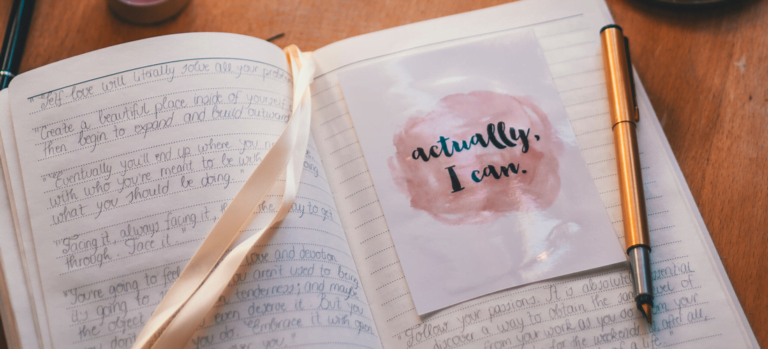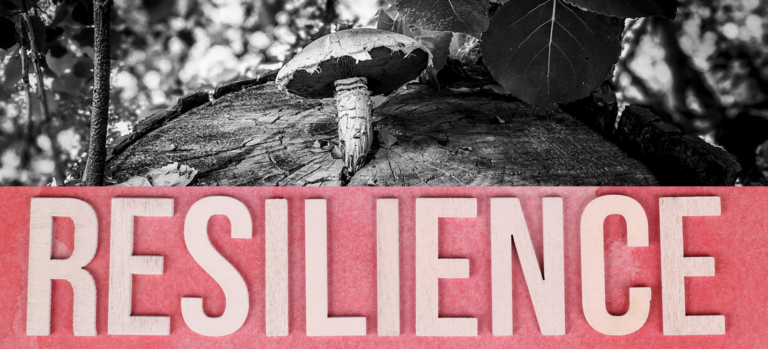Mindfulness and yoga are two powerful practices that have gained a lot of popularity in recent years. Both offer numerous benefits for our mind, body, and overall well-being. While mindfulness helps us cultivate present moment awareness and develop a non-judgmental attitude towards our thoughts and emotions, yoga helps us improve our physical strength, flexibility, and balance. Let’s explore ways on how we can enhance our practice of mindfulness with yoga.
Mindfulness has emerged as a crucial element for maintaining mental well-being. It’s all about staying present, focusing on the here and now, rather than being caught up in past regrets or future anxieties. This mental equilibrium helps in reducing stress, improving decision-making, and enhancing overall quality of life.
Yoga, an ancient practice with profound philosophical roots, is one of the most effective ways to cultivate mindfulness. It’s not just about physical postures or asanas; it’s a holistic approach to well-being that encompasses physical, mental, and spiritual dimensions.
When you practice yoga, you’re not just moving your body—you’re also training your mind. Each pose becomes an exercise in mindfulness as you focus on your breath, maintain alignment, and stay present in the moment. In this way, yoga and mindfulness are deeply interconnected, serving as two sides of the same coin in the journey towards inner peace and wellness.
The Role of Yoga in Enhancing Mindfulness
Exploring the Roots of Yoga
The roots of yoga as a mindfulness practice date back thousands of years to ancient India. Yoga was originally developed as a method to achieve harmony between the heart and soul on the path to divine enlightenment. In contrast to the often physically-focused variations of modern yoga, traditional yoga practices prioritized mindfulness and spiritual growth over physical fitness.
The eight limbs of yoga, as outlined in the ancient text, Patanjali’s Yoga Sutras, provide a roadmap for this journey of self-discovery and self-realization. These eight limbs – including ethical guidelines, personal disciplines, posture, breath control, sensory withdrawal, concentration, meditative absorption, and enlightenment – are designed to guide practitioners towards a state of mindfulness and inner peace.
Each pose or ‘asana’ in yoga is designed to direct the practitioner’s awareness to their body, breath, and mind, creating a deep sense of mindfulness. Deep, conscious breathing, or ‘pranayama’, is another key aspect of yoga that encourages mindfulness. By focusing on the rhythm and sensation of each breath, practitioners can connect with the present moment, letting go of past and future distractions.
Through this exploration of the roots of yoga, it becomes clear that yoga is more than physical exercise. It is a powerful mindfulness practice, offering a path towards self-awareness, inner peace, and ultimately, enlightenment.
Yoga as a Holistic Approach
Yoga, in its most encompassing sense, is a holistic approach that promotes both mental and physical well-being. On a physical level, yoga asanas, or poses, offer a systematic approach to stretch, strengthen, and balance the entire body. Regular practice can improve flexibility, build muscular strength, boost the immune system, and promote cardiovascular health. Beyond this, each asana is designed to stimulate specific organs, glands, and body systems, supporting overall health and well-being.
On a mental level, yoga promotes mindfulness and well-being through practices like pranayama, meditation, and focused concentration. These practices help to quiet the mind, reduce stress, and improve mental clarity. By encouraging practitioners to stay present and mindful, yoga cultivates a sense of inner peace and emotional balance. It allows individuals to tune into their bodies and minds, fostering a deep sense of awareness and self-understanding.
Ultimately, yoga’s holistic approach brings together physical poses, breathwork, and mindfulness to harmonize body, mind, and spirit. It is a journey of self-discovery and personal growth that leads to enhanced overall well-being, linking physical health and mental tranquility. Yoga, therefore, serves not just as an exercise regime but as a comprehensive lifestyle tool that can greatly improve quality of life.
How Yoga Complements Mindfulness
Yoga is an ideal practice for enhancing mindfulness, as it encourages a deep, intrinsic connection between body and mind. The physical aspect of yoga, through various asanas, builds a strong foundation for mindfulness by drawing attention to the body’s movements and alignment. Each pose is completed with intentional awareness, tuning into the sensations, adjustments, and breath required in that moment.
Moreover, the integration of pranayama, or breath control, in yoga further strengthens mindfulness. Each inhale and exhale is purposeful and measured, synchronizing the body’s motions and the mind’s focus. This unity of breath and movement cultivates an acute awareness of the present moment, anchoring the mind to the here and now, reducing distractions and fostering a state of deep mindfulness.
Finally, meditation, a key pillar of yoga, is a profound tool for enhancing mindfulness. By quieting the mind, letting go of thoughts, and focusing on a single point of concentration, one develops the ability to observe thoughts and emotions without judgement. This ability to observe and accept is at the heart of mindfulness.
Thus, yoga is a complementary practice for mindfulness, intertwining physical postures, breath control, and meditation to foster awareness and presence, and ultimately, a deep state of mindfulness.
Mindful Breathing and Yoga
The Significance of Breath in Mindfulness with Yoga
Breath is fundamental in both mindfulness and yoga, serving as a powerful anchor to the present moment. In mindfulness, the act of focusing on the breath is a tried and true method for settling the mind. By paying attention to the inflow and outflow of breath, one becomes acutely aware of the present moment, thereby fostering mindfulness.
Similarly, in yoga, breath plays an equally significant role. Known as ‘pranayama,’ or breath control, it is considered as essential as the physical poses themselves. Breath in yoga is used to guide movement, maintain postures, and most importantly, connect body and mind. Each inhale and exhale in yoga is deliberate, mirroring the movements of the body and encouraging mindfulness.
By intertwining mindfulness and yoga through breath, one can cultivate a greater sense of presence, focus, and tranquility. This practice not only enhances physical wellbeing but also promotes mental and emotional balance. Therefore, the significance of breath in both mindfulness and yoga cannot be overstated; it is the life force that fuels both practices and is instrumental in developing an enhanced state of mindfulness.
Breathing Techniques
1. Ujjayi Breathing (Victorious Breath)
Ujjayi breath is a common pranayama technique used in yoga. The practice involves inhaling deeply through the nose, filling the lungs fully, and then exhaling slowly, also through the nose. The breath is often likened to the sound of the ocean, as it creates a gentle, rhythmic whispering sound. This technique anchors you in the present moment, calms the mind, and helps maintain a steady rhythm in your yoga practice.
2. Nadi Shodhana (Alternate Nostril Breathing)
This technique involves alternately inhaling and exhaling through different nostrils. Known for its ability to balance polarities within the body, Nadi Shodhana can help to harmonize the left and right hemispheres of the brain, promoting mental clarity and an inner sense of peace, essential for deepening mindfulness.
3. Samavritti (Equal Breath)
Samavritti pranayama, also known as equal breathing, involves making your inhales and exhales the same length. This balance can create mental equilibrium, reduce stress, and help you stay focused and present, thereby enriching your yoga practice with mindfulness.
Each of these techniques offers a unique pathway to enhance mindfulness through yoga. Incorporating these into your yoga practice can help forge a stronger connection between mind and body, deepen your sense of self-awareness, and cultivate a profound level of mindfulness.
4. Bhramari Pranayama (Bee Breath)
Bhramari Pranayama, or the Bee Breath, involves making a humming sound during exhalation. This technique helps in calming the mind instantly, reducing anxiety and agitation, and creating a deep sense of peace and presence. By fostering relaxation, it can significantly enhance the mindfulness aspect of your yoga practice.
5. Anulom Vilom (Alternate Nostril Breath)
Anulom Vilom, another form of alternate nostril breathing, is a step beyond Nadi Shodhana. This technique involves holding your breath for a few moments between inhaling and exhaling. This breath retention or ‘kumbhaka’ can enhance concentration and promote a sense of tranquility, paving the way for a more mindful yoga session.
6. Sheetali Pranayama (Cooling Breath)
Sheetali Pranayama, often referred to as the Cooling Breath, is a breathing technique that involves curling your tongue and inhaling through it, followed by a long exhalation. This practice is known for its cooling and calming effects on the nervous system, promoting overall relaxation and aiding in the cultivation of mindfulness.
By consciously incorporating these breathing exercises into your yoga routine, you can significantly enhance your sense of presence and relaxation, leading to a more profound and mindful yoga experience.
Mindful Movement and Yoga
Moving Meditation in Yoga
Moving meditation in yoga is an integral part of achieving mindfulness. This concept refers to the harmonious coordination of breath and movement, often called ‘flow.’ As you transition from one pose to another, your focused attention on each movement encourages a state of mental clarity and calm.
This conscious synchronization of breath and motion not only heightens physical awareness but also steers the mind towards a more profound inner focus. The result is a transcendental state where the body moves fluidly, and the mind achieves elevated mindfulness. This practice of moving meditation in yoga embodies the essence of mindfulness — living in the present moment, fully aware, and without judgment.
Incorporating Mindfulness into Yoga Postures and Flows
Incorporating mindfulness into yoga postures and flows involves adopting a conscious, non-judgmental approach to every movement and pose. It means being acutely aware of how each posture feels, noticing where you feel the stretch, and how your body responds to different movements. Instead of merely moving from one pose to another, mindfulness encourages you to fully experience each moment of your yoga practice.
In a mindful yoga flow, each transition is as significant as the pose itself. The mindful yogi savors the journey between the poses, maintaining a steady, rhythmic breath that acts as an anchor, grounding them in the present moment. This form of focused attention makes the yoga practice a form of moving meditation, where every breath and motion is an act of mindfulness.
In essence, mindfulness in yoga is not just about executing the poses perfectly, but about connecting with yourself on a deeper level. It’s about listening to your body, observing your thoughts without judgment, and embracing each moment with full awareness. By integrating mindfulness into your yoga practice, you can deepen your connection with your inner self, enhancing your overall yoga experience.
Tips for Maintaining Present Moment Awareness During Movement
- Focusing on Breath: Breath is a powerful anchor to the present moment. By focusing on the rhythm and sensation of your breath during yoga, you can cultivate a deeper sense of mindfulness. Inhale deeply before initiating a pose, and exhale as you go deeper into it.
- Body Scan: This involves focusing your attention on different parts of your body, from the toes up to the head, and then reversing the process. It heightens your awareness of your body and how it interacts with different postures.
- Moving Slowly: Slowing down your movements allows you to be fully present within each pose and transition. Moreover, it provides an opportunity to notice subtle changes in your body and mind.
- Maintaining a Non-judgmental Attitude: It’s common to judge ourselves during yoga practice – whether we’re flexible enough, strong enough, or doing the poses correctly. However, mindfulness involves accepting your body and abilities just as they are.
- Using a Mantra: A simple phrase or word, repeated silently, can help tether your mind to the present. Choose a mantra that resonates with you – it could be as simple as ‘inhale, exhale’.
- Cultivating a Witnessing Presence: This involves watching your thoughts and emotions during your practice without getting caught up in them. It encourages you to stay present and observe without reacting.
By incorporating these tips into your yoga practice, you can enhance your mindfulness and deepen your connection to the present moment.
Yoga for Stress Reduction and Emotional Regulation
The Impact of Yoga on Stress and Emotional Well-Being
Yoga, an ancient practice rooted in Indian philosophy, has gained worldwide recognition as a powerful tool for stress reduction and emotional regulation. It combines physical postures, breathing exercises, and meditation, all of which work collaboratively to promote a sense of balance and calm within the mind and body.
The physical aspect of yoga helps release accumulated tension in the body – a common symptom of chronic stress. The practice of various yoga postures, known as asanas, enhances flexibility and strength, but also promotes better blood circulation, improving the overall functioning of the body.
Breathing exercises, or pranayama, are another crucial component of yoga. Conscious and mindful breathing can significantly lower stress levels, by activating the body’s relaxation response and reducing the production of stress hormones.
Finally, yoga’s meditative practices encourage mindfulness, a state of active, open attention on the present. Being mindful enables us to observe our thoughts and feelings from a distance, without judging them as good or bad. This increased self-awareness fosters emotional stability and an enhanced capacity to manage stressful situations.
In essence, the practice of yoga provides a holistic approach to stress reduction and emotional well-being, benefiting individuals not only physically, but also mentally and emotionally.
Techniques for Using Yoga to Manage Stress and Emotions Mindfully
- Savasana (Corpse Pose): Savasana is often practiced at the end of a yoga session. This pose involves lying flat on your back, arms and legs gently spread apart, and eyes closed. It facilitates deep relaxation, helping to quiet the mind and reduce stress and anxiety.
- Pranayama (Breathing Exercises): Techniques such as Anulom Vilom (Alternate Nostril Breathing) and Bhramari (Bee Breathing) can help to calm the mind and manage emotions. These exercises foster mindfulness by focusing the attention on the breath, promoting a sense of inner peace and balance.
- Meditation: Yoga meditation techniques, such as Dhyana, help to achieve a state of mindfulness. Regular practice encourages self-awareness and the ability to observe thoughts and emotions without judgement or reaction, promoting emotional stability and resilience.
- Asanas (Yoga Postures): Certain asanas like Child’s Pose (Balasana) and Tree Pose (Vrikshasana) are known to help manage stress and emotions. These poses promote concentration and mindfulness, helping to clear the mind and release tension in the body.
- Mindful Movement: This involves bringing awareness to the physical sensations and movements of the body while practicing yoga postures. This heightened awareness of the present moment can help cultivate mindfulness and reduce stress.
By integrating these techniques into your daily routine, yoga can be a powerful tool in managing stress and promoting mindfulness. Remember, the goal is not to strive for perfection in each pose, but to approach each practice with self-compassion and patience.
Mindfulness Meditation and Yoga
The Integration of Mindfulness Meditation with Yoga
The integration of mindfulness meditation with yoga is a holistic approach that enhances both physical and mental well-being. Mindfulness meditation involves directing one’s attention to the present moment, acknowledging and accepting it without judgment.
When combined with the physical postures of yoga, it creates a harmony of body and mind. This combination goes beyond the physical benefits of flexibility and strength. It nurtures self-awareness, inner calm, mental clarity, and emotional intelligence.
By incorporating mindfulness meditation into your yoga practice, you’re not only performing asanas but also training the mind to stay present and focused, thereby enhancing the overall yoga experience. This powerful synergy enables individuals to transcend the superficial layers of their existence, accessing a deeper level of awareness and promoting a profound sense of peace and well-being.
Tips for Deepening Your Meditation Practice through Yoga
Here are some practical tips to deepen your meditation practice through yoga:
- Consistency: Make yoga and meditation a regular part of your routine. Consistent practice, even if for just a few minutes each day, is more beneficial than sporadic, longer sessions.
- Creating a Dedicated Space: Having a designated space for your practice can help set the mood and help you transition into a mindful state more easily. Choose a quiet, comfortable spot where you won’t be interrupted, and consider adding elements like candles, incense, or relaxing music to enhance the atmosphere.
- Starting with Gentle Yoga Poses: If you’re new to yoga, begin with gentle poses that allow you to focus on your breath and mindfulness. As your flexibility and strength improve, you can gradually introduce more complex poses.
- Breath Awareness: Use your breath as a focal point during your yoga practice. Pay attention to how it flows in and out, and try to keep it steady and controlled. This focus helps to quiet the mind and deepen your state of meditation.
- Body Scan: Practice a body scan at the beginning or end of your yoga session. This involves mentally scanning your body from head to toe, noticing any sensations, tensions, or discomfort. It’s a great way to check in with yourself and increase body awareness.
- Mindful Movement: Try to maintain mindfulness as you transition from one pose to another. Be aware of each movement and sensation, and try to remain fully present throughout your practice.
Implementing these tips into your routine can greatly enhance your yoga and meditation practice, further cultivating mindfulness and promoting a sense of peace and well-being.
Creating a Mindful Yoga Routine
Building a Personalized Mindful Yoga Practice
Building a personalized yoga practice that predominantly emphasizes mindfulness starts with understanding your individual needs and capabilities. Each person’s body and mind are unique, and thus, there’s no one-size-fits-all approach to yoga.
Begin by setting clear and realistic goals for your practice. They could be as simple as reducing stress, improving flexibility, or enhancing concentration. Be patient with yourself and understand that progress takes time.
Next, choose yoga poses that align with your skill level and help you achieve your mindfulness goals. For beginners, simple poses like the Tree Pose, Child’s Pose, and Mountain Pose are excellent starting points since they foster balance, focus, and a deep sense of calm, essential elements for mindfulness.
Incorporate mindful breathing techniques into your practice. Pranayama, the practice of breath control, is an integral part of yoga and is a powerful tool for cultivating mindfulness. Techniques such as Ujjayi Breath, also known as “Victorious Breath,” can help you stay focused and present during your practice.
Lastly, ensure consistency in your practice. Regularity is key in yoga, and more so in building mindfulness. Designate specific times for your practice when you can be undisturbed and fully immersed. Over time, this routine will become second nature, and you’ll find yourself more mindful not just during yoga, but in other aspects of life as well.
Remember, mindfulness with yoga is a journey, not a destination. Enjoy each moment of your practice, and let it guide you towards inner peace and awareness.
Setting Goals and Intentions for Your Practice
Setting goals and intentions for your yoga practice is a cornerstone process that will guide your progression towards mindfulness. This practice, often referred to as Sankalpa, goes beyond just setting typical goals. Instead, it involves deep introspection to understand what you truly seek from your practice. In the context of mindfulness, your intention may be to cultivate more awareness, reduce anxiety, or improve focus.
When setting your intentions, ensure they are realistic and resonate with your personal experiences and aspirations. You might choose to focus on developing a positive habit or letting go of a negative one. It could also be about nurturing self-love, acceptance, and patience.
Remember to approach your intentions with a non-judgmental mind. Mindfulness is about observing and accepting, not criticizing or forcing change. As your practice evolves, so may your intentions. Regularly revisit them, refine them, and remember to approach your practice with an open mind and heart. In this way, you harness the power of yoga to enhance mindfulness, nurturing a peaceful and aware presence both on and off the mat.
Balancing Consistency with Variety
Maintaining a balance between consistency and variety in your yoga routine is key to enhancing mindfulness. On one hand, consistency helps in establishing a regular practice. By sticking to a routine, you can make yoga an integral part of your daily life, which in turn reinforces the habit of mindfulness. On the other hand, variety in your routine brings fresh perspectives and challenges, which keeps your practice from turning into a rote process devoid of thoughtful awareness.
Variety can be introduced in several ways. You could experiment with different yoga styles, sequences or even the time of day you practice. For example, if you’re accustomed to a vigorous Vinyasa routine, you could switch things up with a restorative Yin yoga session. Or, you might want to alternate between morning and evening practices to experience the different effects on your mind and body.
However, the trick is not to let the quest for variety disrupt the rhythm of your practice. Just as too much variety can lead to inconsistency, too much consistency can breed monotony. Strive to find a balance that allows your practice to remain fresh and engaging, yet steady and habitual. This is the way to a mindful yoga practice that is as enriching as it is sustainable.
Conclusion
The practice of yoga presents a powerful avenue for enhancing mindfulness, by inviting us to be fully present in each moment, and to connect with our inner selves in a deep and meaningful way. Consistency in our practice helps us embed the habit of mindfulness into our daily lives, while variety keeps our practice fresh and engaging, preventing it from becoming a rote process.
Whether we’re exploring different yoga styles or alternating our practice timings, the key is to maintain a balance that fosters thoughtfulness and awareness. By doing so, we ensure that our practice remains enriching and sustainable over time, ultimately bringing us the manifold benefits of enhanced mindfulness, including improved mental clarity, heightened self-awareness, and a greater sense of peace and well-being.









